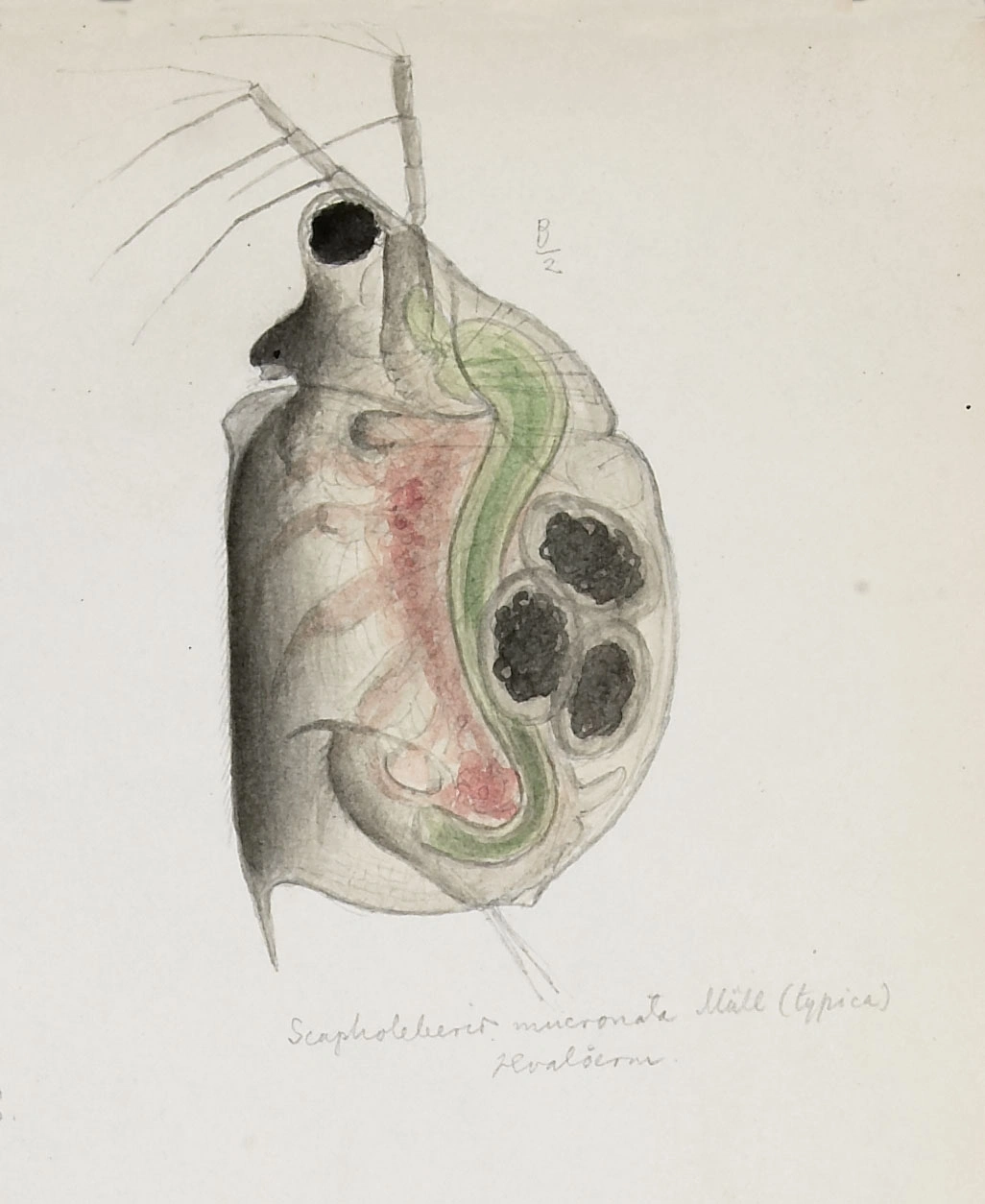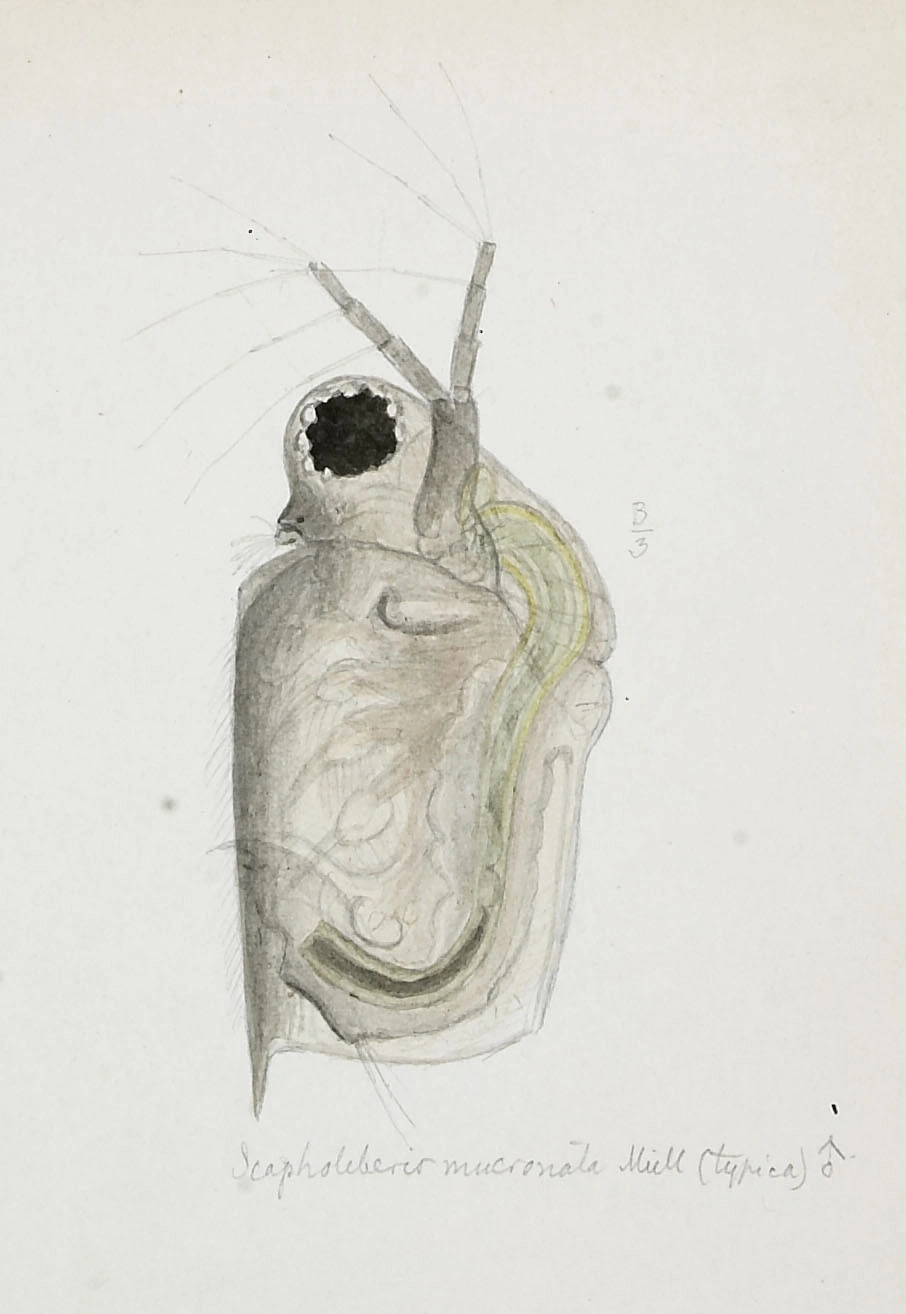Scapholeberis mucronata
Quite often the anterior part of the head (forehead) of Scapholeberis mucronata is armoured with an upward turned horn and posteriorly the ventral edge of the carapace ends up in a strong spine. It has a dark colour, sometimes almost black.
Key characteristics
Scapholeberis mucronata (female)
Scapholeberis mucronata (male)
The genus Scapholeberis differs from other daphnids both in its exterior habitués and by its behaviour, however its anatomical details have the same peculiarities which are characteristic for this family. The head bends forward and is almost a continuum of the dorsal edge of the carapace. Quite often the anterior part of the head (forehead) is armoured with an upward turned horn. Sars described this variant as a true species, S. cornuta. Posteriorly the ventral edge of the carapace ends up in a strong spine. Its postabdomen has much in common with the postabomen found in Ceriodaphnia sp. S. mucronata has a dark colour, sometimes almost black.
Female: Length 0.6–1.4 mm
Male: Length 0.4–0.8 mm
Ecology and distribution
S. mucronata is a very common littoral species and is found in more than 30 % of the water bodies. It is found in all parts of the country. The frequency of localities containing the species decrease with altitude. It occurs in almost 50 % of the localities situated between 100 and 300 m a.s.l. compared with less than 4 % above 1000 m a.s.l. It is found in water bodies of all sizes, but is especially common in small ponds and ditches. It is common in both acid and alkali water as well as in electrolyte rich and electrolyte poor water.
| Vitenskapelig navn | < 4,5 | 4,5 - 4,9 | 5,0 - 5,4 | 5,5 - 5,9 | 6,0 - 6,4 | 6,5 - 7,0 | 7,0 - 7,4 | > 7,5 |
|---|---|---|---|---|---|---|---|---|
| 49 | 43,5 | 32 | 46,4 | 36,7 | 26,5 | 27,7 | 28,6 |
| Vitenskapelig navn | < 1,0 | 1,0 - 1,4 | 1,5 - 1,9 | 2,0 - 2,9 | 3,0 - 3,9 | 4,0 - 4,9 | 5,0 - 6,9 | 7,0 - 9,9 | > 10,0 |
|---|---|---|---|---|---|---|---|---|---|
| 14,2 | 23,7 | 38,8 | 38,8 | 33,3 | 35,2 | 35,3 | 38,9 | 37 |
| Vitenskapelig navn | < 0,01 | 0,01 - 0,09 | 0,1 - 0,9 | 1,0 - 9,9 | 10,0 - 99 | 100 - 999 | > 1000 |
|---|---|---|---|---|---|---|---|
| 37,3 | 33,8 | 32,5 | 28,2 | 28,8 | 31,5 | 43,5 |
| Vitenskapelig navn | < 100 | 100-299 | 300-499 | 500-699 | 700-999 | >1000 |
|---|---|---|---|---|---|---|
| 21,1 | 47,7 | 38 | 36,3 | 17,8 | 2,8 |

